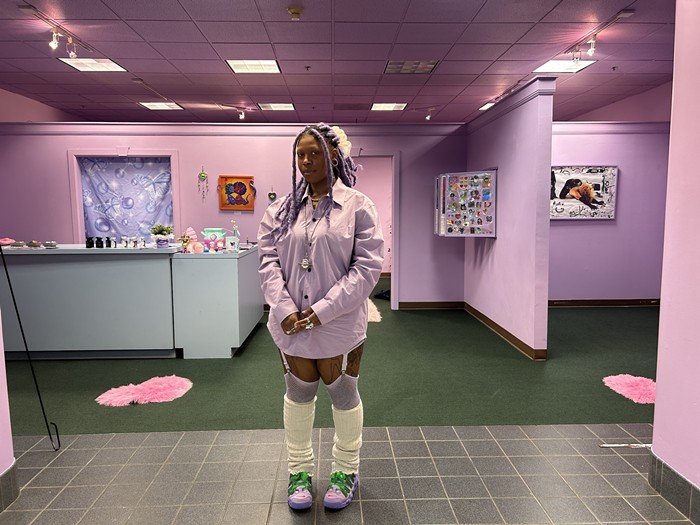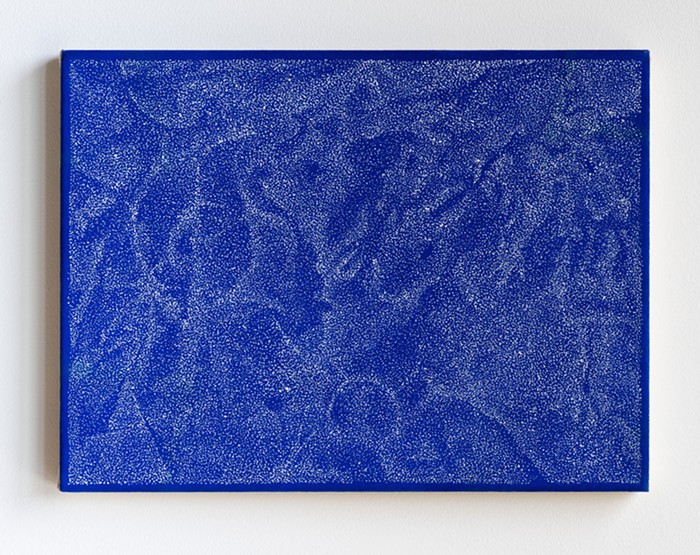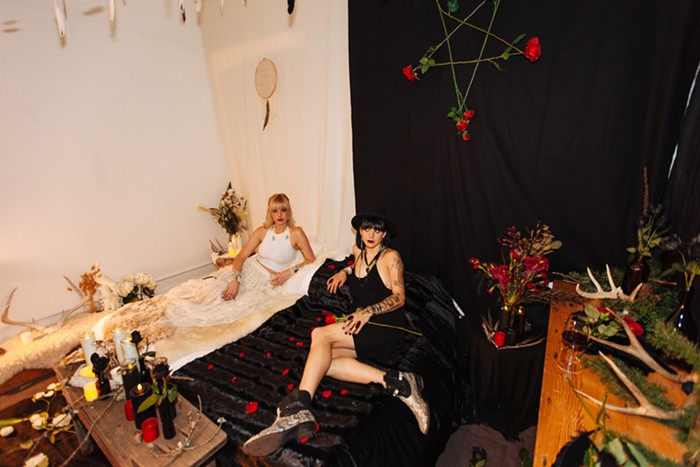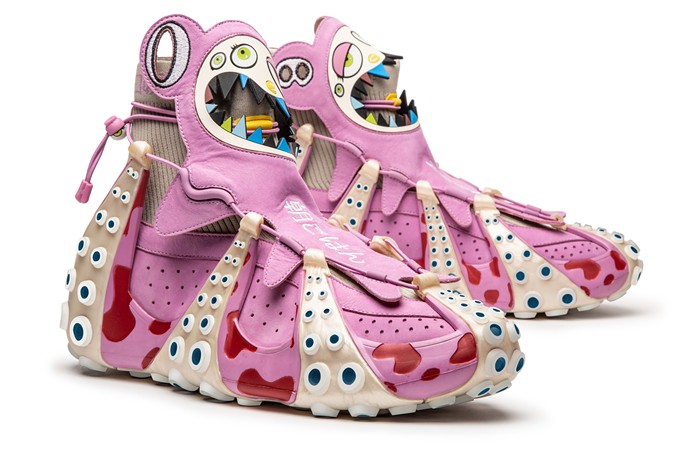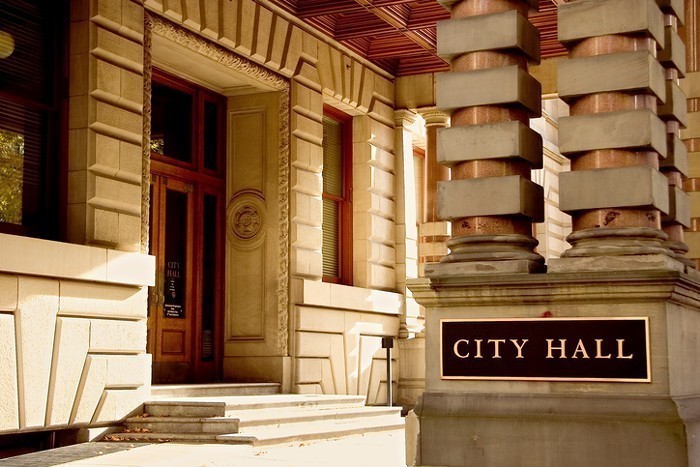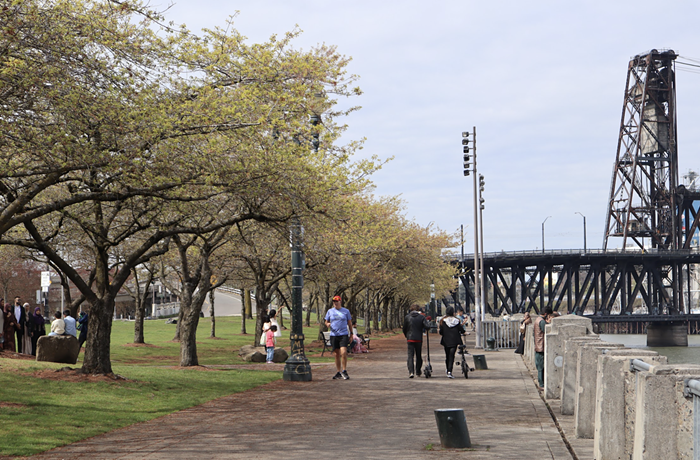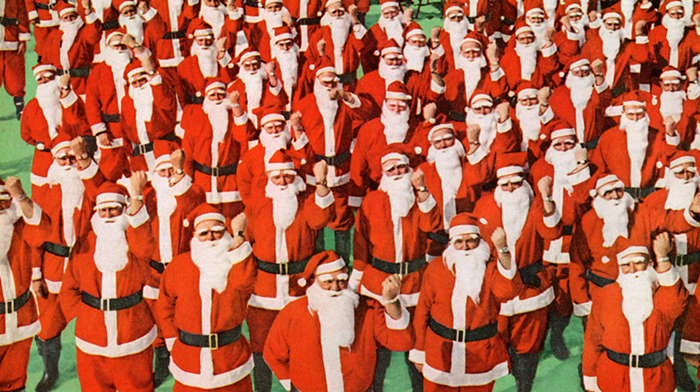
Ansel Adams might be the most famous photographer of all time. Even if you don’t know his name, you have likely seen his arresting black and white images of Yosemite and the deserts of the American southwest. The Portland Art Museum (PAM) is currently hosting Ansel Adams in Our Time, a retrospective of his work, those who influenced him, and artists who have built on and responded to his legacy. The museum is also providing an online experience of the exhibit for those who are unable to visit in person.
I first encountered Adams as a teenage photographer making black and white 35mm pictures with my mom’s old Minolta SLR. I learned about his technical mastery from film to print, his development of the zone system, and the timeless images of National Parks landscapes. I pined for the large format 8x10 camera he drove around the country with, setting up on the roof of his car-turned-mobile-darkroom to capture the moonrise over the Tetons and Snake River. The Adams of my mind was a kindly old man with a long white beard meandering through life with a ravenous curiosity and an unconditional love for the land.
As I drive to the museum today, some twenty years later, I wonder how my mythic Ansel Adams measured up to the real man—how his work in the lands of the West intersected with Indigenous land rights, manifest destiny, and every other complicating issue regarding his subjects that I have come to consider over the last two decades. I also wonder what it will be like going to a museum again, with physical distancing rules in place.

Entering the museum from the South Park Blocks, I find an empty foyer with a lone ticket taker at a plexiglass-shielded podium tucked away on the left side. Straight ahead, a wall-sized sign looms over the entryway with the name of the exhibit, a paragraph-long land acknowledgement, and an arrow leading to the beginning of the exhibit. Up the stairs and into the show’s first hallway, the exhibition begins with Adams’ early work interspersed with wet plate prints and daguerreotypes of earlier photographers who influenced him. We learn about his teenage years as an enterprising tour guide selling photographic prints and albums to tourists on day trips with the Sierra Club. A few groups of two or three are spread around the large hall. We all do the social distance shuffle to avoid encroaching on the bubbles of others.
The following journey through his career tells the story of an artist like any other—balancing passion projects like his trip through the Southwest with paid gigs like commissioned photographs of a potash mine and its workers. The scope of the show is unsurprisingly immense. There are explorations of city life, Japanese internment camps, and Zuni villages. Throughout Adams’ career, he moved from a purist landscape photographer to a modernist who experimented heavily with lighting and darkroom processes. An immense wealth of research and knowledge has gone into the curation, and it shows.

What stands out about this show is the context provided in the form of work by dozens of artists who were influenced by or are responding to Adams’ legacy. His work, especially the famous stuff, idealized the American West as a wild, untamed, and uninhabited wilderness waiting to be experienced by rugged, straight, white men seeking adventure. The show challenges this perspective with work from Indigenous artists, LGBTQ+ artists, Black artists, and other underrepresented identities. These works push their perspectives to the center of the conversation.
A portrait from Melodie McDaniel’s documentation of the Compton Jr. Posse Youth Equestrian Program brings up the Great Migration and evokes the long legacy of Black cowboys in the West. To its right, Navajo artist Will Wilson’s piece addresses the radioactive waste in Navajo lands from millions of tons of uranium ore the US government mined there. Wendy Red Star, or Baaéetitchish, is a Crow artist whose images of the four different seasons challenge white perceptions of Native Americans and address “Crow and Native culture and the colonization of people," per an artist's statement. David Benjamin Sherry’s monochromatic c-prints in shades of blue and fuschia render the desert landscapes of the American Southwest in stark, otherworldly color in his “queering” of the spaces most often rendered through a straight male gaze, according to his artist’s statement.

Juxtapositions throughout the exhibition challenge Adams’ legacy as much as it celebrates it. The part of me that emulated Adams in my youth got to nerd out on iconic, hyper-detailed contact prints of "Monolith–The Face of Half Dome" and learn about his later work exploring form in urban landscapes. My present-day self got to discover tons of new artists, and new ways to engage with my own photography.
The work in this exhibit is large and small, expansive and intimate, but most of all accessible, as the collection includes audio descriptions and interpretation for each section of the gallery. It is approachable to all levels of art and photography enthusiasts.
Ansel Adams is the most famous American photographer for a reason, and this exhibition does a wonderful job of asking why.
Ansel Adams in Our Time, organized by the Museum of Fine Arts, Boston, is currently making its only West Coast stop at PAM. The exhibit runs through August 1.
